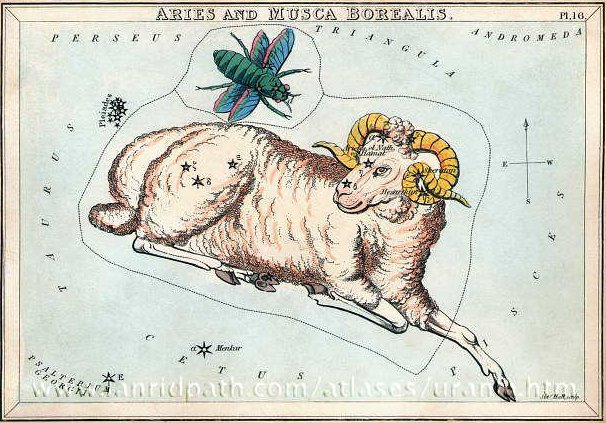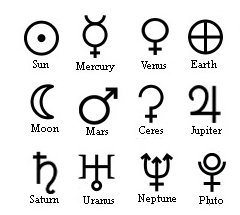211. The Babylonian zodiac
had its Mad Dog close to the Claws of
the Scorpion:
And with his left hand he was pointing across to
Aries (similar to how Aries was pointing
ahead with her left foreleg towards Pisces):
... Mad
Dog
(Lupus) The
Mad Dog is probably a relic of an ancient
star configuration which included the now
derelict Bison-man. Together they
constituted a version of the 'Lion-bull'
conflict, which is widely thought to
symbolise the seasonal conflict between
summer and autumn. Here the bull, who
represents the autumn rains slays the lion
of summer ...

"... the
pre-Columbian Toadstool-god Tlalóc,
represented as a toad with a serpent
head-dress, has for thousands of years
presided at the communal eating of the
hallucigenic toadstool psylocybe; a
feast that gives visions of transcendental
beauty. Tlalóc's European
counterpart, Dionysus, shares too many of
his mythical attributes for coincidence;
they must be versions of the same deity ... I
suggest that a secret Dionysiac mushroom
cult was borrowed from the native Pelasgians
by the Achaeans of Argos. Dionysius's
Centaurs, Satyrs, and Maenads, it seems,
ritually ate a spotted toadstool called
'flycap' (amanita muscaria), which gave them
enormous muscular strength, erotic power,
delirious visions, and the gift of prophecy
... " (TheWhite Goddess)

... Mercury was used in the process of
curing pelts for hats, making it impossible
for hatters to avoid inhaling the mercury
fumes given off during the hat making
process; hatters and mill workers thus often
suffered mercury poisoning, causing
neurological damage, including confused
speech and distorted vision
...
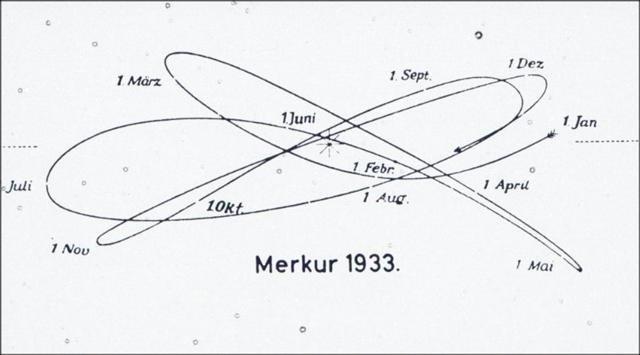
... The first day in the lunar calendar was
(O)Hiro, which also was the name for
Mercury. When Father Light (Sun) was gone,
then the Full Moon would take a step forward
and steal his position
...
In the Babylonian zodiac map (see above) the symbol
for Mercury was placed between Frond and
Furrow, while the symbol at the Lion corresponded to that
of Jupiter and the symbol at Lupus to that
of Saturn:
And instead of the usual Sun symbol there
was a double circle, evidently a further development
of the p.m. sign:
Possibly the corresponding rongorongo double circle
sign was drawn outside instead of inside
- cfr Cb1-19:
... Only the outline of an object or a
'person' should be drawn according to the
rongorongo rules of writing. In this respect
the rongorongo system evidently stands in
opposition to the Mayan glyphs, where the
inside is very detailed.
A
few random examples:
|
Mayan glyphs |
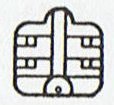 |
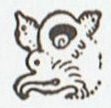 |
 |
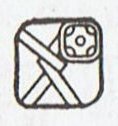 |
|
Rongorongo glyphs |
 |
 |
 |
 |
In the Mayan system also
the orientation of writing and the
orientation of the glyphs are opposite to
that of rongorongo. The text moves from
right to left and the front of the glyphs -
if such an aspect can be seen - is at left.
I do not believe this is
just a coincidence. Maybe there was a
conscious effort to keep the systems apart
(of course there were contacts between the
Polynesians and their Mayan neighbours in
the east). Maybe the upside down sky north
of the equator implied everything else
should also be different. In the Mayan
system of writing I cannot perceive any sign
of the dimension 'inside' contra 'outside'
in the glyphs. Maybe they did not attatch
any meaning to this dimension. But in
rongorongo the difference between the
'outside' and the 'inside' is essential.
When occasionally some sign is drawn inside
the outline of a glyph we must pay attention
...

 |
 |
 |
 |
|
Cb1-12 (354 + 50) |
Cb1-13 |
Cb1-14 (350 + 8 * 7) |
Cb1-15 (407) |
|
manu rere -
kua rere
ga manu
- ki te ragi |
eaha te nuku erua |
koia kua huki |
e niu tu |
|
Ga.
Preposed
plural marker of rare
usage. 1. Sometimes used
with a few nouns
denoting human beings,
more often omitted.
Te ga vî'e, te ga poki,
the women and the
children. Ga rauhiva
twins. 2. Used with some
proper names. Ga
Vaka, Alpha and Beta
Centauri (lit. Canoes).
Vanaga.
Significantly this is
the only place among the
readings of Metoro where
he used the binome
rere ga. Beta
Centauri (Agena, the
Knee) rose together with
Thuban and this was 9 (= *221 - *212) days earlier
than Toliman at the Janus type
of hau tea in
Cb1-3 when at the other
side of the sky was the
Knot (Alrisha). |
|
INVISIBLY CLOSE TO THE
SUN (helical dates): |
|
ρ Lupi (221.0),
TOLIMAN
(Shoot of the Grapevine)
= α Centauri
(221.2), π Bootis
(221.8), ζ Bootis
(221.9) |
31 Bootis (222.0),
YANG MUN
(South Gate) = α Lupi
(222.1),
RIJL AL AWWA (Foot of
the Barker) = μ Virginis
(222.5), ο Bootis
(222.9) |
IZAR (Girdle) = ε Bootis
(223.0),
109 Virginis,
α
Apodis (No Feet)
(223.3), μ Librae
(223.8) |
Al Zubānā-14a
(Claws) /
Visakha-16 (Forked) /
Root-3 (Badger)
ZUBEN ELGENUBI
(Southern
Claw)
= α Librae
(224.2), ξ Bootis, ο
Lupi (224.5) |
KOCHAB
(Kakkab,
the Star) = β Ursae Min.
(225.0), ξ Librae
(225.7) |
|
Oct 28 (301) |
29 |
30 (366 - 63) |
31 (304 = 80 + *225) |
Nov 1 |
|
ºOct 24 |
25 |
26 |
27 (300) |
28 |
|
'Oct 1 |
2 |
3 |
4 (277) |
5 |
|
17 (260) |
(*222 - *41) |
"Sept 19 (*182) |
20 |
21 (264) |
|
AUG 25 |
26 (*222 - *64) |
27 (239 = 303 - 64) |
28 (60 + 180) |
29 (241 = 58 + 183) |
|
217 - 218 |
219 |
220 (= 240 - 20) |
221 (= 225 - 4) |
 |
|
CLOSE TO THE FULL MOON
(and nakshatra dates): |
 |
|
ν Arietis (38.5), δ, ε
Ceti (38.8) |
μ Arietis (39.4),
HEAD OF THE FLY
= 35 Arietis
(39.6),
KAFFALJIDHMA (Part of a
Hand) = γ Ceti,
θ Persei (39.8) |
π Ceti, ο Arietis
(40.0),
ANGETENAR (Bend in the
River) = τ¹ Eridani,
μ Ceti (40.2),
RIGHT WING
= 39 Arietis
(40.9) |
Bharani-2 (Yoni) /
Stomach-17 (Pheasant)
π Arietis (41.2),
MIRAM (Next to the
Pleiades) = η Persei
(41.3),
BHARANI
= 41 Arietis (41.4),
τ² Eridani, σ Arietis
(41.7) |
TA LING (Great Mound)
= τ Persei (42.4) |
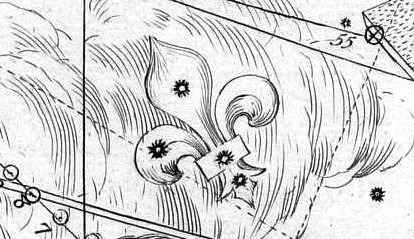
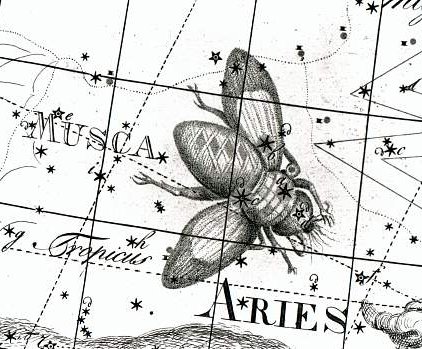 |
|
28 (118) |
(4 * 29½ + 1) |
April 30 |
May 1 (121) |
2 |
|
24 |
25 |
ºApril 26 |
27 |
28 (118) |
|
'April 1 (91) |
2 (7 * 13 + 1) |
3 |
4 (*14 = *41 - *27) |
5 |
|
"March 18 |
19 (*364) |
3-20 (*365) |
0h (*366) |
"March 22 (*1) |
|
FEBR 23 |
BIS-SEXTUM |
25 (56 = 120 - 64) |
26 (*343 = *366 - 23) |
2-27 |
|
34 - 35 |
36 = 56 - 20 |
37 = 41 - 4 |
38 = 58 - 20 |
|
399 - 400 |
401 (= 36 + 365) |
402 (= 220 + 182) |
403 = 407 - 4 |
|
The sequence of heliacal
star dates in the text
seems here to make a
jump ahead with 1 place,
because *366 = 365 + 1
and from Arcturus, Syrma
(*215) to Zuben Elgenubi
(*224) there were not 9
but 8 glyphs. Likewise
were there 9
precessional days from
*32 to *41 (Bharani).
The sky dome was moving
said Metoro where the
Full Moon reached Mira.
Maeva.
T. 1.
Move. Rangi-maeva
= Moving Sky (name of a
marae). 2. Greet,
greeting. Henry. |
|
...
The leap
day was introduced as
part of the Julian
reform. The day
following the Terminalia
(February 23) was
doubled, forming the 'bis
sextum - literally
'double sixth', since
February 24 was 'the
sixth day before the
Kalends of March' using
Roman inclusive counting
(March 1 was the 'first
day'). Although
exceptions exist, the
first day of the bis
sextum (February 24)
was usually regarded as
the intercalated or
'bissextile' day since
the third century.
February 29 came to be
regarded as the leap day
when the Roman system of
numbering days was
replaced by sequential
numbering in the late
Middle Ages ...
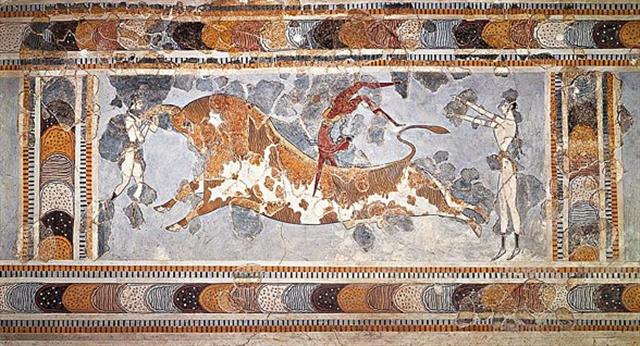 |
 |
 |
 |
 |
 |
 |
|
ki te ariki - e ka hua ra
tona rima |
koia kua iri i ruga o te
rima - e o to
vaha mea |
manu moe ra |
ki to mata |
e nuku mata |
hoea |
|
→ 16 |
Cb1-17 |
→ 4 *
29½ |
Cb1-19 |
Cb1-20 (412) |
→ 14 * 29½ |
|
INVISIBLY CLOSE TO THE
SUN (helical dates): |
|
KE KWAN (Cavalry Officer) =
β Lupi
(226.3),
KE KWAN = κ Centauri
(226.4),
ZUBEN ELAKRIBI (Claw of the
Scropion)
= δ Librae
(226.8), π¹ Oct. (226.9) |
ω Bootis (227.2),
NEKKAR (Herdsman) = β
Bootis
(227.3), σ Librae
(227.5), π² Oct.
(227.7),
NADLAT (Mean Little Ones) =
ψ Bootis
(227.8), π Lupi (227.9) |
15h (228.3)
ZUBEN HAKRABIM = ν Librae
(228.3), λ Lupi (228.9) |
ω Oct. (229.3),
ι
Librae
(229.6), κ Lupi (229.7), ζ
Lupi (229.8) |
Al Zubānā-14b
χ Bootis (230.3),
PRINCEPS = δ Bootis
(230.6),
ZUBEN ELSCHEMALI
(Northern Claw) = β Librae
(230.8) |
μ Lupi, γ Tr. Austr.
(231.3), ο Librae (231.8) |
|
2 (80 + 226) |
3 (*227 → 3.14 |
Nov 4 |
5 (*229) |
6 |
7 |
|
ºOct 29 |
30 |
31 (304) |
ºNov 1 |
2 |
3 (*227 → π) |
|
'Oct 6 |
7 (280 = 307 - 27) |
8 |
9 (*202) |
10 |
11 |
|
"Equinox |
23 (307 - 41) |
"Sept 24 |
25 (*188) |
26 |
27 (270) |
|
AUG 30 (306 - 64) |
31 (60 + 183) |
SEPT 1 (244) |
2 (*165) |
3 |
4 |
|
222 = 226 - 4 |
223 |
224 = 244 - 20 |
225 |
226 |
→ 3.14 |
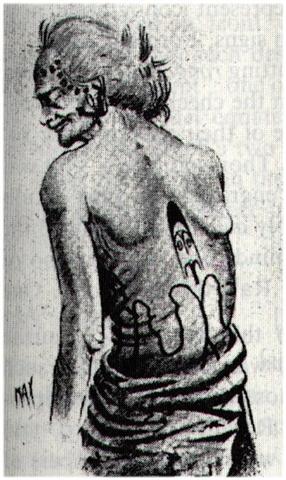 |
|
CLOSE TO THE FULL MOON
(and nakshatra dates): |
|
ρ Arietis (43.0),
GORGONEA SECUNDA = π Persei
(43.5),
ACAMAR (End of the Stream) =
θ Eridani
(43.6), ε Arietis (43.7),
λ Ceti (43.9)
|
MENKAR
(Nose)
= α Ceti
(44.7) |
3h (45.7)
GORGONEA TERTIA = ρ Persei
(45.1),
ALGOL
(Head of the Demon) = β Persei
(45.9)
|
ι Persei (46.1),
MISAM (Next to the Pleiades)
= κ Persei
(46.2),
GORGONEA QUARTA = ω Persei
(46.7),
BOTEIN (Pair of Bellies) = δ
Arietis
(46.9) |
ζ Arietis (47.7) |
ZIBAL (Young Ostriches) = ζ
Eridani
(48.0), κ Ceti (48.9) |
|
May 3 (123) |
4 |
5-5 (125) |
6 (*46) |
7 |
8 (128 = 64 + 64) |
|
ºApril 29 |
30 |
ºMay 1 (121) |
2 |
3 |
4 |
|
'April 6 |
7 |
4-8 |
9 |
10 (100) |
11 (*21 = *48 - 27) |
|
"March 23 |
3-24 |
JULIAN EQUINOX |
(85 = 126 - 41) |
27 |
28 (*7 = *48 - *41) |
|
2-28 (59 = 123 - 64) |
MARCH 1 (60) |
3-2 (61 = 126 - 65) |
3 |
4 |
MARCH 5 (64) |
|
39 = 59 - 20 |
40 |
41 = 45 - 4 |
42 |
43 |
44 |
|
405 |
406 |
407 (= 224 + 183) |
408 (= 42 + 366) |
409 |
410 |
|
The first
day in MARCH, where at the
time of rongorongo the
'nose' (open jaw, vaha
mea) of the Great Fish
(α Ceti) rose heliacally,
came 16 + 1 days after
Sheratan, and at the time of
Bharani this place was 3-24,
the day before the Julian
equinox.
At the time
of Bharani the Demon star
Algol was at the Julian
equinox and at the time of
Hyadum II the Mouth of the
Sea Beast (Menkar) would
have arrived in day 60
(MARCH 1). FEBRUARY 28 was
day 31 + 28 = 59
corresponding to May 3 (123)
- 64.
...Then the big Fish did
swallow him, and he had done
acts worthy of blame.
Had it not been that he
(repented and) glorified
Allah, He would certainly
have remained inside the
Fish till the Day of
Resurrection. - Qur'an,
chapter 37 (As-Saaffat),
verse 139–144.
But We cast him forth on the
naked shore in a state of
sickness,
And We caused to grow, over
him, a spreading plant of
the gourd kind.
And We sent him (on a
mission) to a hundred
thousand (men) or more.
And they believed; so We
permitted them to enjoy
(their life) for a while. -
Qur'an, chapter 37
(As-Saaffat), verse 145–148
...
 |
Counting 16
days ahead from Bharani (*41.4) at
Cb1-14 will lead us to glyph number
30 (counted from Cb1-1), when
Bharani would return to visibility in May 17
(corresponding to MARCH 14 → π):
 |
 |
 |
|
ko te rima |
kua oo ki te
vai |
ma te ua |
|
Cb1-22 (414 =
392 + 22) |
Cb1-23 |
Cb1-24 |
|
INVISIBLY CLOSE TO THE
SUN (helical dates): |
|
ο Cor. Borealis
(232.0), δ Lupi
(232.1), φ¹, ν²
Lupi (232.2), ν¹
Lupi (232.3), ε
Lupi (232.4), φ²
Lupi (232.5),
PHERKAD
= γ Ursae Min.
(232.6), ε
Librae (232.7),
η Cor. Borealis
(232.8), υ Lupi
(232.9) |
ALKALUROPS (The
Herdsman's
Lance) = μ
Bootis
(233.1),
ED ASICH (Male
Hyena) = ι
Draconis
(233.2) |
NUSAKAN
(Pauper's Bowl)
= β Cor. Bor.
(234.0), κ¹
Apodis (234.3),
ν Bootis
(234.7), ζ
Librae (234.9) |
|
Nov 8 (*232 =
*49 + 183) |
9 |
10 (314) |
|
ºNov 4 (308 =
125 + 183) |
5 (*229) |
6 |
|
'Oct 12 (285) |
13 |
14 (*207 = *24 +
*183) |
|
"Sept 28 (88 +
183) |
29 (2 * 136) |
30 (273 = 314 -
41) |
|
SEPT 5 (248 = 65
+ 183) |
6 |
7 (*170 = *234 -
*64) |
|
228 (= 45 +
183) |
229 |
230 (= 314 -
84) |
|
CLOSE TO THE FULL MOON
(and nakshatra dates): |
|
τ
Arietis (49.7) |
ALGENIB PERSEI
= α Persei
(50.0), ο Tauri
(50.2), ξ Tauri
(50.8)
GIENAH (γ Corvi)
|
σ Persei (51.6) |
|
May 9 (*49 = 414
- 365) |
10 (130) |
11 |
|
ºMay 5 (125 =
308 - 183) |
6 (*46 = *229 -
*183) |
7 |
|
'April 12 |
4-13 (→ 14 *
29½) |
14 (104 = 314 -
183 - 27) |
|
"March 29 (88) |
30 |
31 |
|
MARCH 6 |
7 (66 = 130 -
64) |
8 |
|
45 |
46 = 130 - 84 |
47 |
|
411 (= 45 +
366) |
412 |
413 (= 14 *
29½) |
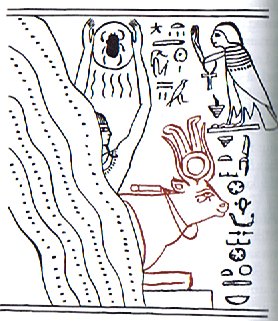
|
18 |
27 |
38 |
38 |
= 121
(= 11 *
11) |
The number of
'rain droplets'
in the 4 'rivers
of time' above
are 121 as in
the day number
for ºMay 1 (at
heliacal Algol)
or as the place
for the tattoing
instrument (hoea)
in Cb1-21.
Hat-hor
(the House of
Horus) emerged
after 11 * 11
dark nights. But
she could not be
observed before
night number 121
+ 16 = 137. In
ancient Egypt
everything was
upside down and
it was a Cow
instead of a
Bull. But Bulls
cannot give
birth and
Bharani was a
place for birth.
|
ARIES: |
|
1 |
Ashvini |
β
and
γ
Arietis |
Horse's
head |
April
17
(107) |
|
wife
of
the
Ashvins |
Sheratan
and
Mesarthim |
|
2 |
Bharani |
35,
39,
and
41
Arietis |
Yoni,
the
female
organ
of
reproduction |
May
1
(121) |
|
the
bearer |
Musca
Borealis |
 |
 |
 |
 |
|
Cb2-1 |
Cb2-2
(392 +
26) |
Cb2-3
(27) |
|
Eaha
te honu
kua tupu |
i to
maitaki
- o te
hau
|
te
hono
huki -
maro |
|
INVISIBLY CLOSE TO THE
SUN (helical dates): |
|
θ Cor.
Borealis
(235.3),
γ Lupi
(235.6),
GEMMA
= α Cor.
Bor.,
ZUBEN
ELAKRAB
= γ
Librae,
QIN = δ
Serpentis,
ε Tr. Austr.
(235.7),
μ Cor.
Borealis
(235.8),
υ Librae
(235.9)
SIRRAH
(α
Andromedae) |
φ Bootis
(236.2),
ω
Lupi, τ
Librae
(236.3),
ψ¹ Lupi
(236.7),
ζ Cor.
Borealis
(236.9) |
κ Librae
(237.2),
ι
Serpentis
(237.4),
ψ² Lupi,
ρ Oct.
(237.5),
γ Cor.
Borealis,
η Librae
(237.7),
COR
SERPENTIS
= α
Serpentis
(237.9) |
|
Nov 11
(314 + 1
= 132 +
183) |
12 (*236
= *53 +
*183) |
13 (*237
= 8 *
29½ + 1) |
|
ºNov 7
(311 =
128 +
183) |
8 (*232
= *49 +
*183) |
9 |
|
'Oct 15
(288 =
105 +
183) |
16 |
17 (*210
= *173 +
*37) |
|
"Oct 1
(274 =
91 +
183) |
2 (= 16
- 14) |
3 (*196
= *173 +
*23) |
|
SEPT 8
(251 =
68 +
183) |
9 (*172
= *236 -
*64) |
10 |
|
231 (=
315 -
84) |
232 (=
216 +
16) |
233 (=
237 - 4) |
|
... In
other
words,
the
ancient
Druidic
religion
based on
the
oak-cult
will be
swept
away by
Christianity
and the
door -
the god
Llyr -
will
languish
forgotten
in the
Castle
of
Arianrhod,
the
Corona
Borealis.
This
helps us
to
understand
the
relationship
at Rome
of Janus
and the
White
Goddess
Cardea
who is
... the
Goddess
of
Hinges
who came
to Rome
from
Alba
Longa.
She was
the
hinge on
which
the year
swung -
the
ancient
Latin,
not the
Etruscan
year -
and her
importance
as such
is
recorded
in the
Latin
adjective
cardinalis
- as we
say in
English
'of
cardinal
importance
- which
was also
applied
to the
four
main
winds;
for
winds
were
considered
as under
the sole
direction
of the
Great
Goddess
until
Classical
times
...
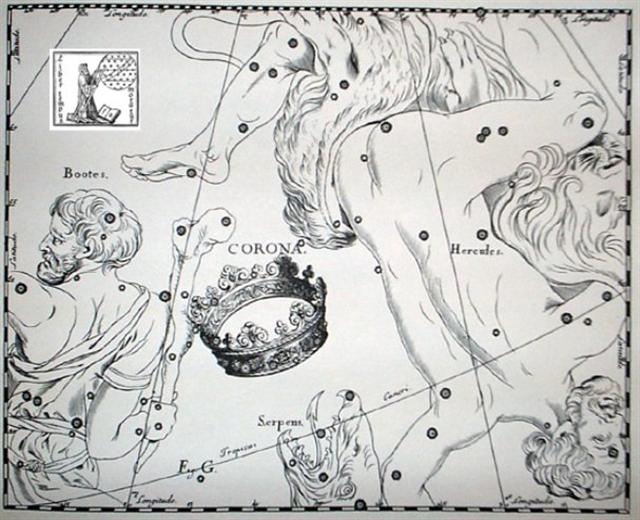 |
|
CLOSE TO THE FULL MOON
(and nakshatra dates): |
|
no star
listed
(52) |
ψ Persei
(53.1)
ACRUX (α
CRUCIS) |
δ Persei
(54.7) |
|
May 12
(132) |
13 |
14 |
|
ºMay 8
(2 * 64) |
9 |
10 |
|
'April
15 (105
= 132 -
27) |
16 |
17 |
|
"April 1
(91 =
132 -
41) |
2 |
3 |
|
MARCH
9 (68 =
132 -
64) |
10 |
11 |
|
414 (=
231 +
183) |
415 (=
49 +
366) |
416 (=
400 +
16) |
|
48 = 52
- 4 |
49 |
50 |
 |
 |
 |
 |
|
Cb2-4 (420 =
285 + 135) |
Cb2-5 (392 +
29) |
Cb2-6 (30) |
Cb2-7 |
|
te ua |
koia ra |
kua tuku
ki to mata -
ki tona
tukuga |
e kiore -
henua
-
pa rei |
|
INVISIBLY CLOSE TO THE
SUN (helical dates): |
|
π Cor.
Borealis,
UNUK ELHAIA
(Necks
of the
Serpents) =
λ Serpentis
(238.1),
CHOW = β
Serpentis
(238.6) |
κ Serpentis
(239.3), δ
Cor.
Borealis,
TIĀNRŪ = μ
Serpentis
(239.5), χ
Lupi,
(239.6), ω
Serpentis
(239.7),
BA (= Pa) =
ε Serpentis,
χ Herculis
(239.8). κ
Cor.
Borealis, ρ
Serpentis
(239.9) |
λ Librae
(240.0), β
Tr. Austr.
(240.3), κ
Tr. Austr.
(240.4), ρ
Scorpii
(240.8) |
Iklīl al
Jabhah-15
(Crown of
the
Forehead) /
Anuradha-17
(Following
Rādhā)
/
Room-4
(Hare)
ξ Lupi, λ
Cor.
Bor.(241.1),
ZHENG = γ
Serpentis,
θ Librae
(241.2),
VRISCHIKA =
π Scorpii
(241.3), ε
Cor.
Borealis
(241.5), DSCHUBBA
(Front of
Forehead)
m
= δ Scorpii
(241.7), η
Lupi (241.9) |
|
Nov 14 |
15 |
16 (320) |
17 |
|
ºNov 10 (314
= 318 - 4) |
11 |
12 |
13 |
|
'Oct 18 (291
= 318 - 27) |
19 |
20 |
21 |
|
"Oct 4 (277
= 318 - 41) |
5 |
6 |
7 |
|
SEPT 11 (254
= 318 - 64) |
12 |
13 |
14 |
|
234 = 318 -
84 |
235 |
236 (= 8 *
29½) |
237 |
|
Pa.
1. Mgv.: pa,
an inclosure, a
fenced place.
Ta.: pa,
inclosure,
fortification.
Mq.: pa,
inclosure. Sa.:
pa, a
wall. Ma.: pa,
a fort. 2. Mgv.:
pa, to
touch. Sa.:
pa'i, id.
Ma.: pa,
id. 3. Mgv.:
pa, to
prattle. Ta.:
hakapapa, to
recount. 4. Mq.:
pa, a
hook in bonito
fishing. Sa.:
pa, a
pearlshell
fishhook. Ma.:
pa, a
fishhook.
Pau.: hakapa,
to feel, to
touch. Mgv.:
akapa, to
feel, to touch,
to handle
cautiously.
|
|
Pae.
1. To end, to
come to an end;
ku-pae-á
taaku kai, I
have no more
food;
pae-atu, to
leave en
masse;
ku-pae-atu-á
tagata ki
Hangaroa tai.
everybody
has left for
Hangaroa
Bay. 2. To
start, to break
out (of wars,
fights: taûa);
ku-pae-á te
taûa, the
fight, the war,
has started. 3.
Dressed, edged
stones anciently
used to enclose
a permanent
umu;
paepae wall
of undressed
stones built as
protection
against the
wind; also any
other
protection.
Pa'e: Of a
boat, to
deviate, to
drift, to stray
under the
effects of
currents or
winds;
ku-pa'e-á te
vaka i te
tokerau, the
wind has made
the boat deviate
from its course.
Vanaga.
Paega: 1.
Dressed stones
forming the
foundations of
the ancient
houses or of the
walls of the
monumental
ahus;
hare paega,
house with stone
foundations;
paega-ahu,
ahu wall. 2.
Household,
people who live
in a hare
paega. 3. To
lay stones on
the bottom and
against the
sides of a hole:
he-paega i te
rua. Vanaga.
1. Enough. 2.
Division of a
subject (paiga).
Pau.: paega,
a party, a side.
Ta.: pae,
division, part.
3. Threshold,
sill, joist. P
Ta.: pae,
sill, joist. 4.
To exhaust, to
finish, past;
e ko pae,
impregnable;
hakapae, to
exhaust, to
finish, to end,
to execute, to
accomplish, to
conclude, to
consummate, to
consume, to
achieve, to
acquit. Paea:
1. Enough, past.
2. To decay, to
waste away;
paea tooa,
to deprive.
Paega,
foundation.
Paepae,
pavement, plank,
canoe;
hakapaepae,
to lay planks,
to floor. P
Pau.: paepae,
a raft. Mgv.:
paepae, a
pavement, to lay
up stones with
regularity into
a wall. Mq.:
paepae,
elevated
pavement on
which the house
is built. Ta.:
paepae,
pavement, raft.
Paero,
all, totalit, to
sweep off all.
Churchill. |
|
Pahi.
T. Double-canoe.
Henry. |
|
Pahu.
Drum.
Pahu-rutu-roa
=
Long-beating-drum.
Barthel. M.
Pahū.
Tree
gong. Starzecka.
Pahu uma,
coffin; in
modern usage,
any sort of jar.
Pahupahu
= To dig a hole.
Vanaga.
A
trough, barrel,
cask, cradle,
drum, chest,
box;
pahu nui,
a kettle;
pahu oka,
a drawer;
pahu papaku,
coffin;
pahu rikiriki,
sheath;
pahu viriviri,
hogshead.
Pahupahu,
box. Churchill.
A
trough, barrel,
cask, cradle,
drum, chest,
box;
pahu nui,
a kettle;
pahu oka,
a drawer;
pahu papaku,
coffin;
pahu rikiriki,
sheath;
pahu viriviri,
hogshead;
pahupahu,
box. P Mgv.,
Ta.:
pahu,
a drum. Mq.:
pahu,
a drum, a large
cylindrical
container. (To.:
bahu,
a hollow tree
set in water as
a filter.) Sa.:
pusa,
a box. To.:
buha,
id. Fu.:
pusa,
id. Niue:
puha,
id. Pau.:
puha,
id.
Pahuahi,
lantern, beacon.
Paukumi,
closet,
cupboard.
Pahupopo,
a mould;
pahupopokai,
cupboard for
food.
Pahure:
1. To sweep
everything away.
2. To wound, to
lacerate, scar,
bruise, lesion,
sore;
pahurehure,
to wound, to
scratch;
hakapahure,
to wound. T
Pau.:
pahure,
to be skinned;
pahore,
to peel off, to
scale. Mgv.:
pahore,
to cut off, to
chop, to slice.
Ta.:
pahore,
to flay, to
skin. Churchill
2. |
"ε,
of 3.7 magnitude, was
Pa, the name of a
certain territory in
China." (Allen)
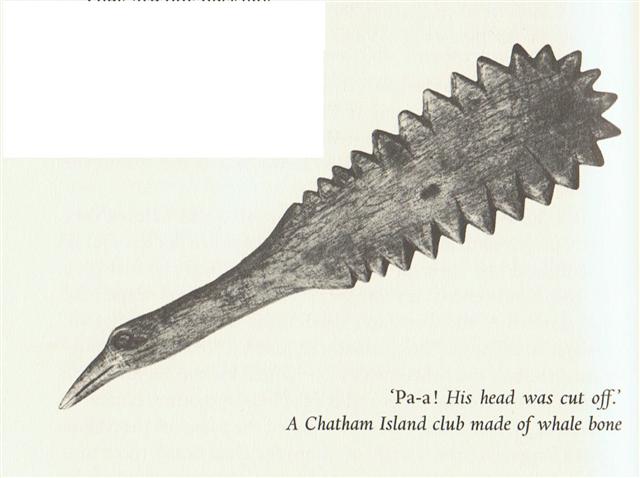 |
|
CLOSE TO THE FULL MOON
(and nakshatra dates): |
|
Al
Thurayya-27
(Many Little
Ones) /
Krittikā-3
(Nurses of
Kārttikeya)
/
TAU-ONO
(Six Stones)
ATIKS = ο
Persei,
RANA
(Frog) = δ
Eridani
(55.1),
CELAENO (16
Tauri),
ELECTRA
(17),
TAYGETA
(19),
ν Persei
(55.3),
MAIA (20),
ASTEROPE
(21), MEROPE
(23)
(55.6) |
Hairy
Head-18
(Cockerel) /
Temennu-3
(Foundation
Stone)
ALCYONE
(56.1),
PLEIONE
(28 Tauri),
ATLAS
(27)
(56.3) |
MENKHIB
(Next to the
Pleiades) =
ζ Persei
(57.6)
PORRIMA (γ
Virginis) |
ZAURAK
(The Boat) =
γ Eridani
(58.9) |
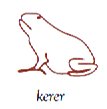 |
|
15 (135 +
365 = 500) |
May 16 (136) |
17 |
18 (*58) |
|
ºMay 11 |
12 (132) |
13 |
14 (*54) |
|
4-18 (473 =
108 + 365) |
'April 19 |
4-20 |
21 (111) |
|
"April 4 |
5 (501 - 41
= 460) |
6 (*16) |
7 |
|
MARCH 12 |
13 |
3-14 (73) |
15 |
|
417 (= 51
+ 366) |
52 (= 136
- 84) |
53 (= 73
- 20) |
54 (= *58
- 4) |
|
... The
Mahabharata
insists on
six
as the
number of
the Pleiades
as well as
of the
mothers of
Skanda
and gives a
very broad
and wild
description
of the birth
and the
installation
of
Kartikeya
'by the
assembled
gods ... as
their
generalissimo',
which is
shattering,
somehow,
driving home
how little
one
understands
as yet. The
least which
can be said,
assuredly:
Mars was
'installed'
during a
more or less
close
conjunction
of all
planets; in
Mbh. 9.45
(p. 133) it
is stressed
that the
powerful
gods
assembled
'all poured
water upon
Skanda,
even as the
gods had
poured water
on the head
of Varuna,
the lord of
waters, for
investing
him with
dominion'.
And this
'investiture'
took place
at the
beginning of
the Krita
Yuga,
the Golden
Age
... |
 |
|
